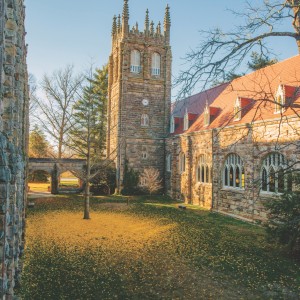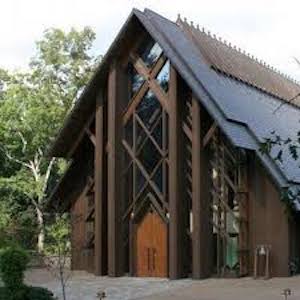My role in the Rebel’s Rest project began as an effort to document its architecture, using methods I learned for a research internship my junior year at Sewanee. However, it quickly evolved into a crash course in what Mr. Hix designated “Logology.” From November 2014 to the following March, Mr. Hix and his dedicated two-man crew were my instructors. “Class” was held nearly every day on site at Rebel’s Rest, freezing rain or shine, and the only requirements for class dress were sturdy boots and a warm coat (hard hat also recommended).
Kerry S. Hix Antique Log Cabins was contracted by the University to carefully deconstruct what remained of Rebels Rest. My Hix not only brought decades of working knowledge and experience to the project, but also the enthusiasm of following a lifelong passion. His childhood fascination with cabins and the pioneer lifestyle began while growing up in a two-room cabin across the creek from an 19th-century water-powered gristmill near Dalton, Georgia. “I’ve been in love with log cabins since I was a boy,” he said, recalling drives around the country when he would point them out to his Dad from the car window. It was only later in life he turned this passion into a career. He’s still spotting cabins, and has located and restored over 150 in his four decades of experience in the trade.
Mr Hix said that dating the cabins he dismantles is “kind of like detective work.” While he takes them apart, he looks for clues to when they were built and modified by the details of the doors, window openings, nail types and patterns, the structure of chimneys, overhangs, and how residents added onto their homes. While I took notes, photographs, and made architectural drawings, Mr. Hix and his crew ensured no detail went unnoticed as the story of Rebel’s Rest came to light. He pointed out where the old logs walls were whitewashed then covered over; where doors became windows and vise versa; where porches had been added, roofed, and removed. “This house right here has had me since the first day I saw it,” he said of the extensively modified home, “That’s the truth.” Mr. Hix works mostly on older and smaller cabins, and he remarked over and again on the care taken and the quality of materials used in the original construction of Rebel’s Rest: heart pine in the floors and ceilings, even where it wouldn’t be seen, and precisely sawn white oak logs. By 1866, even in the wake of the Civil War, there were plenty of cheaper and faster ways to build a house. With the coming of sawmills, people built fewer and fewer cabins, favoring frame houses that used sawn boards and much less material than whole logs. As the University’s first commissioner of buildings and lands, Fairbanks actually banned log cabins from facing University Avenue. He was careful to distinguish Rebel’s Rest as a timber house, using traditional construction methods but with all the modern refinements available.
Mr. Hix’s observations encouraged me to think not only about how, but why Fairbanks built the house the way he did. When I posed this question to Dr. Gerald Smith, he readily provided historical context, citing archival accounts that Rebel’s Rest was modelled on John Armfield’s cabins at Beersheba Springs, where some of the earliest and most ambitious meetings of Sewanee’s Board of Trustees were held before the Civil War. So perhaps Fairbanks wanted to recall those optimistic days, and his house was a symbol of stability and sustainability in the heart of the campus he was trying hard to rebuild. Dr. Smith brought a deep knowledge of historic Sewanee to the project along with over twenty years’ experience in historical field studies.
In sum, the daily observations of Mr. Hix and his crew, along with the guidance and regional expertise of Dr. Smith, were a constant and invaluable source of knowledge in the recording process. Their eye for detail and wisdom gained from years of field experience were my constant guides throughout the project. Working with this collaborative crew ensured that the documentation of Rebel’s Rest went beyond simply recording and measuring, and contributed to ongoing discussion on the choice of materials and the evolution of the structure through time.

